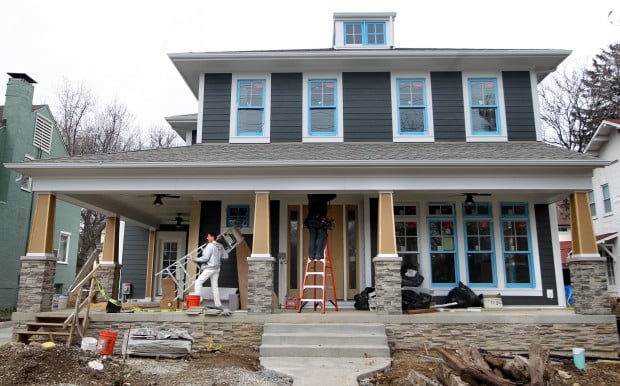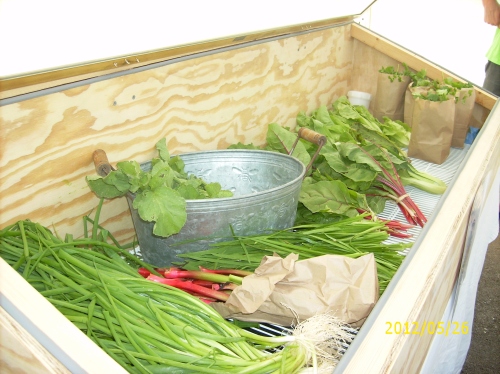Atmospheric CO2
As mentioned in this morning's post about the documentary SWITCH, the film does not account for accelerating levels of atmospheric CO2. The predictions of switching over to combinations of renewable, nuclear and conventional fuel sources is not presented with a CO2 analysis - will it change the graph below? In which direction?
When I see papers written by researchers from the organizations listed below it is hard for me to see a conspiracy in the works. Further research may suggest other interpretations and that can be considered when available. In the mean time this seems like an appropriate filter for discussions about the future/impact of fuel and energy sources.
Here is a link to the following abstract of a paper cited by CO2Now.org:
Target Atmospheric CO2: Where Should Humanity Aim?
James Hansen* 1,2, Makiko Sato 1,2, Pushker Kharecha 1,2, David Beerling 3, Robert Berner 4, Valerie Masson-Delmotte 5, Mark Pagani 4, Maureen Raymo 6, Dana L. Royer 7 and James C. Zachos 8
1 NASA/Goddard Institute for Space Studies, New York, NY 10025, USA
2 Columbia University Earth Institute, New York, NY 10027, USA
3 Dept. Animal and Plant Sciences, University of Sheffield, Sheffield S10 2TN, UK
4 Dept. Geology and Geophysics, Yale University, New Haven, CT 06520-8109, USA
5 Lab. Des Sciences du Climat et l’Environnement/Institut Pierre Simon Laplace, CEA-CNRS-Universite de
Versailles Saint-Quentin en Yvelines, CE Saclay, 91191, Gif-sur-Yvette, France
6 Dept. Earth Sciences, Boston University, Boston, MA 02215, USA
7 Dept. Earth and Environmental Sciences, Wesleyan University, Middletown, CT 06459-0139, USA
8 Earth & Planetary Sciences Dept., University of California, Santa Cruz, Santa Cruz, CA 95064, USA
Abstract:
Paleoclimate data show that climate sensitivity is ~3°C for doubled CO2, including only
fast feedback processes. Equilibrium sensitivity, including slower surface albedo feedbacks, is
~6°C for doubled CO2 for the range of climate states between glacial conditions and ice-free
Antarctica. Decreasing CO2 was the main cause of a cooling trend that began 50 million years ago,
the planet being nearly ice-free until CO2 fell to 450 ± 100 ppm; barring prompt policy changes,
that critical level will be passed, in the opposite direction, within decades. If humanity wishes to
preserve a planet similar to that on which civilization developed and to which life on Earth is
adapted, paleoclimate evidence and ongoing climate change suggest that CO2 will need to be
reduced from its current 385 ppm to at most 350 ppm, but likely less than that. The largest
uncertainty in the target arises from possible changes of non-CO2 forcings. An initial 350 ppm
CO2 target may be achievable by phasing out coal use except where CO2 is captured and adopting
agricultural and forestry practices that sequester carbon. If the present overshoot of this target CO2
is not brief, there is a possibility of seeding irreversible catastrophic effects.
When I see papers written by researchers from the organizations listed below it is hard for me to see a conspiracy in the works. Further research may suggest other interpretations and that can be considered when available. In the mean time this seems like an appropriate filter for discussions about the future/impact of fuel and energy sources.
Here is a link to the following abstract of a paper cited by CO2Now.org:
Target Atmospheric CO2: Where Should Humanity Aim?
James Hansen* 1,2, Makiko Sato 1,2, Pushker Kharecha 1,2, David Beerling 3, Robert Berner 4, Valerie Masson-Delmotte 5, Mark Pagani 4, Maureen Raymo 6, Dana L. Royer 7 and James C. Zachos 8
1 NASA/Goddard Institute for Space Studies, New York, NY 10025, USA
2 Columbia University Earth Institute, New York, NY 10027, USA
3 Dept. Animal and Plant Sciences, University of Sheffield, Sheffield S10 2TN, UK
4 Dept. Geology and Geophysics, Yale University, New Haven, CT 06520-8109, USA
5 Lab. Des Sciences du Climat et l’Environnement/Institut Pierre Simon Laplace, CEA-CNRS-Universite de
Versailles Saint-Quentin en Yvelines, CE Saclay, 91191, Gif-sur-Yvette, France
6 Dept. Earth Sciences, Boston University, Boston, MA 02215, USA
7 Dept. Earth and Environmental Sciences, Wesleyan University, Middletown, CT 06459-0139, USA
8 Earth & Planetary Sciences Dept., University of California, Santa Cruz, Santa Cruz, CA 95064, USA
Abstract:
Paleoclimate data show that climate sensitivity is ~3°C for doubled CO2, including only
fast feedback processes. Equilibrium sensitivity, including slower surface albedo feedbacks, is
~6°C for doubled CO2 for the range of climate states between glacial conditions and ice-free
Antarctica. Decreasing CO2 was the main cause of a cooling trend that began 50 million years ago,
the planet being nearly ice-free until CO2 fell to 450 ± 100 ppm; barring prompt policy changes,
that critical level will be passed, in the opposite direction, within decades. If humanity wishes to
preserve a planet similar to that on which civilization developed and to which life on Earth is
adapted, paleoclimate evidence and ongoing climate change suggest that CO2 will need to be
reduced from its current 385 ppm to at most 350 ppm, but likely less than that. The largest
uncertainty in the target arises from possible changes of non-CO2 forcings. An initial 350 ppm
CO2 target may be achievable by phasing out coal use except where CO2 is captured and adopting
agricultural and forestry practices that sequester carbon. If the present overshoot of this target CO2
is not brief, there is a possibility of seeding irreversible catastrophic effects.




 SUNDAY, JANUARY 13, 2013 AT 10:49AM
SUNDAY, JANUARY 13, 2013 AT 10:49AM



















READER COMMENTS (3)
Do you think that you are being brave, "transgressive", and radical with your art?
Do you understand that mindlessly parroting the beliefs of your peers, teachers, advisers, and the entire art "community" is in fact neither brave, transgressive, or radical?
Do you think that there is stodgy bourgeois that must be shocked out of their complacency, and you are just the artist to do it?
Do you think you deserve a government grant?
Do you think that people who object to paying for art they don't like are philistines?
What if they called themselves a "community"?